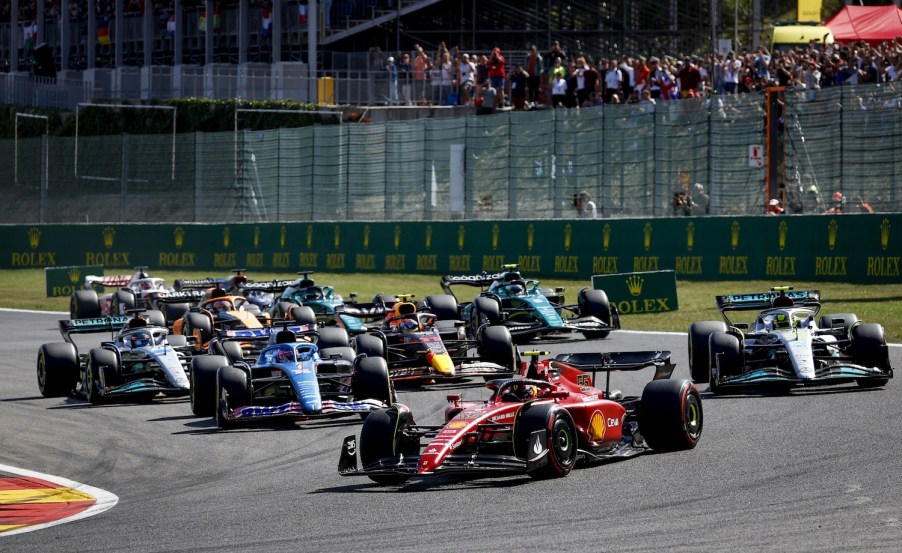
What Does It Mean When a Formula 1 Car Is ‘Porpoising?’
So you were watching a Formula 1 race the other day and the very excitable announcer shouted, “Look, the Mercedes car is porpoising!” But hard as you squinted, you couldn’t identify any aquatic-mammal-like activity by Lewis Hamilton. Luckily, this latest bit of F1 jargon is relatively easy to remember: porpoising is simply when a car’s aerodynamic elements cause it to bounce up and down like an airplane in turbulence.
Interestingly, Formula 1 drivers have not struggled with porpoising in a generation: this very dangerous problem is caused as teams struggle to adapt to the all-new 2022 car.
What is porpoising?
A “porpoising” Formula 1 car generates so much downforce that it pulls itself too close to the track’s surface for its aerodynamic elements to work. When this happens, it stops creating downforce and snaps up to a higher ride height. Then it creates downforce, drops down, and the cycle continues.

Why is this phenomenon called porpoising? Probably because porpoises like to leap in and out of the water while swimming along. Why not dolphining? Beats us. But perhaps “porpoising” just has a better ring to it.
Don’t let porpoising’s cute name fool you. It is an incredibly dangerous phenomenon. If a Formula 1 car loses downforce during a tight corner, it will fly off the track.
Even when the driver manages to keep a porpoising car on the track, they risk serious injury or nerve damage from the constant punishment. The aforementioned Lewis Hamilton said of porpoising, “I just got through that race on adrenaline, biting down on my teeth through the pain. I can’t express the pain that you experience, especially on the straight here.”
Read more of what drivers are saying about porpoising.
Why are 2022 Formula 1 cars porpoising?
The Formula 1 cars are all-new for the 2022 season. Instead of creating downforce from just a front and rear wing, the new cars create much of their downforce with an aerodynamic “floor” under the car. This new element has proven so effective that it is pulling the car too low and cutting off its own airflow.

The FIA, which organizes Formula 1, is seeking to close the gap between the fastest and slowest teams. It returned to “ground effect” downforce for the 2022 season to reduce the turbulence behind Formula 1 cars and make passing easier. This aerodynamic floor has proven very effective, and racing is tighter than ever.
At the same time, the FIA is capping the amount each team can spend on materials and research and development. This spending cap leaves even the wealthiest teams struggling to adapt to the all-new car design. This one-two punch is why last year’s leading manufacturer (Mercedes) is struggling with porpoising as much, or more, than everyone esle.
Is there a solution to porpoising?
The simplest way to prevent a Formula 1 car from dropping too low and porpoising is to increase its ride height. But teams resist this solution because the higher a Formula 1 car’s default ride height, the slower it must drive around the track.

Another possible solution could be adaptive hydraulic suspension. Such a system would allow a Formula 1 car to begin the race at a low, competitive ride height. Then, it could “stiffen up” as the car’s downforce increases, and it threatens to drop too close to the track–according to Top Gear.
Unfortunately, the FIA found that hydraulic dampers create too much turbulence behind the car and banned them for the 2022 season. Creating such a system would also strain most teams’ budget caps. So for the 2022 season, teams will have to find a different solution to their race cars bobbing like porpoises.
Next, see Formula 1 cars porpoising in the video below:



